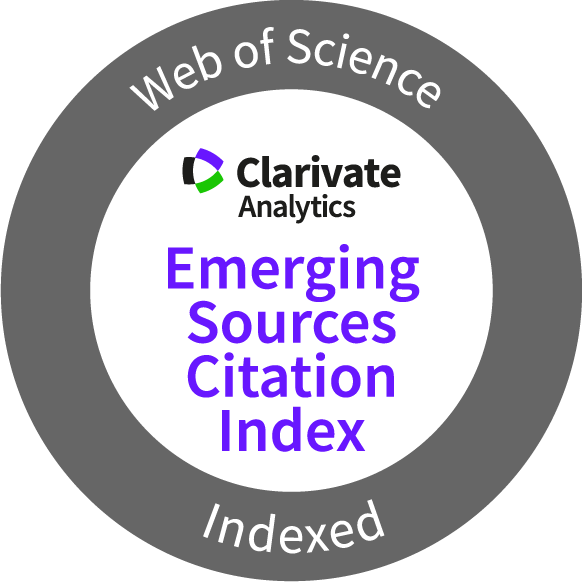Chemistry Journal of Moldova
2010 Volume 5, no.1
Author(s):
Field: Inorganic and coordination chemistry
Type: Review
Issue: 2010 Volume 5, no.1
Pages: 7-23
Vasile Lozan
Field: Inorganic and coordination chemistry
Type: Review
Issue: 2010 Volume 5, no.1
Pages: 7-23
Full Text (PDF): Download
DOI: dx.doi.org/10.19261/cjm.2010.05(1).01
Graphical Abstract: The coordination chemistry of dinickel macrocyclic
Downloads: 21
Author(s):
Field: Inorganic and coordination chemistry
Type: Review
Issue: 2010 Volume 5, no.1
Pages: 24-35
Vasile Lozan
Field: Inorganic and coordination chemistry
Type: Review
Issue: 2010 Volume 5, no.1
Pages: 24-35
Full Text (PDF): Download
DOI: dx.doi.org/10.19261/cjm.2010.05(1).02
Graphical Abstract: The steric protection offered by the macrobinucleating hexaazaditiophenolate
Downloads: 22
Author(s):
Field: Organic chemistry
Type: Review
Issue: 2010 Volume 5, no.1
Pages: 36-56
V. Sargorovschi, N. Sucman, T. Iudin, D. Duca, E. Stingaci, D. Prodius, S. Pogrebnoi, F. Macaev
Field: Organic chemistry
Type: Review
Issue: 2010 Volume 5, no.1
Pages: 36-56
Full Text (PDF): Download
Author(s):
Field: Organic chemistry
Type: Review
Issue: 2010 Volume 5, no.1
Pages: 57-72
L. Bets, Z. Ribkovskaia, L. Vlad, S. Pogrebnoi, F. Galin, F. Macaev
Field: Organic chemistry
Type: Review
Issue: 2010 Volume 5, no.1
Pages: 57-72
Full Text (PDF): Download
Author(s):
Field: Analytical chemistry
Type: Research paper
Issue: 2010 Volume 5, no.1
Pages: 73-77
Mihail Revenco, Mariana Martin, Waell Abu Dayyih
Field: Analytical chemistry
Type: Research paper
Issue: 2010 Volume 5, no.1
Pages: 73-77
Full Text (PDF): Download
DOI: dx.doi.org/10.19261/cjm.2010.05(1).05
Graphical Abstract: A potentiometric selective sensor based on trinuclear
Downloads: 24
Author(s):
Field: Ecological chemistry
Type: Research paper
Issue: 2010 Volume 5, no.1
Pages: 78-83
Elena Mosanu, P. Spataru, T. Lupascu, Maria Sandu, Tatiana Goreacioc, A. Tarita
Field: Ecological chemistry
Type: Research paper
Issue: 2010 Volume 5, no.1
Pages: 78-83
Full Text (PDF): Download
DOI: dx.doi.org/10.19261/cjm.2010.05(1).06
Graphical Abstract: Nitrification is the oxidation of ammonia to nitrate, via nitrite and it occupies a central position within the global nitrogen cycle. Nitrifying bacteria are the organisms capable of converting the most reduced form of nitrogen, ammonia, to the most oxidized form, nitrate, but their activity is influenced by pollution level. Starting with the assumption that pollution of small internal water courses in the Republic of Moldova remained severe (phenols, detergents and copper regularly exceed the MACs) the work presented in the paper discusses the evolution of ammonia ions nitrification in the water of river Prut tributaries and its correlation with the content of pollutants in water: surface-active substances, Cu, BOD5, COD and other compounds.
Downloads: 29
Author(s):
Field: Ecological chemistry
Type: Research paper
Issue: 2010 Volume 5, no.1
Pages: 84-89
M. Sandu, E. Mosanu, V. Gladchi, A. Tarită, Gh. Duca, P. Spataru, T. Lupascu, E. Sergentu, R. Lozan, V. Jabin, S. Turcan
Field: Ecological chemistry
Type: Research paper
Issue: 2010 Volume 5, no.1
Pages: 84-89
Full Text (PDF): Download
DOI: dx.doi.org/10.19261/cjm.2010.05(1).07
Graphical Abstract: As sources of water supply in the Republic of Moldova underground waters constitute 15,2% (bore holes, springs and wells). The present work includes water quality investigations and aims to reveal local sources in river Nistru hydrographic basin (Rezina district) for drinking water provision in villages. Chemical composition of investigated spring’s water shows that in Rezina district 19% of springs are polluted with nitrogen compounds. Water of only 9% of springs is in conformity with the standard for drinking water. Water from 102 springs meets the requirements of irrigation that doesn’t present the risk of soil salinization (K > 18) – 1 383 L/min.
Downloads: 34
Author(s):
Field: Industrial chemistry
Type: Research paper
Issue: 2010 Volume 5, no.1
Pages: 90-94
Liudmila V. Dyakova, Aleksander G. Kasikov, Elena S. Kshumaneva, Svetlana V. Drogobuzhskaya
Field: Industrial chemistry
Type: Research paper
Issue: 2010 Volume 5, no.1
Pages: 90-94
Full Text (PDF): Download
DOI: dx.doi.org/10.19261/cjm.2010.05(1).08
Graphical Abstract: The paper deals with the extracting cobalt salts by using mixtures on the basis of tertiary amine from multicomponent solutions from the process of hydrochloride leaching of cobalt concentrate. The optimal composition for the extraction mixture, the relationship between the cobalt distribution coefficients and modifier’s nature and concentration, and the saltingout agent type have been determined. A hydrochloride extraction technology of cobalt concentrate yielding a purified concentrated cobalt solution for the production of pure cobalt salts has been developed and introduced at Severonikel combine.
Downloads: 21
Author(s):
Field: Industrial chemistry
Type: Research paper
Issue: 2010 Volume 5, no.1
Pages: 95-97
Aleksander G. Kasikov, Anna M. Petrova
Field: Industrial chemistry
Type: Research paper
Issue: 2010 Volume 5, no.1
Pages: 95-97
Full Text (PDF): Download
DOI: dx.doi.org/10.19261/cjm.2010.05(1).09
Graphical Abstract: The effect of sulphuric acid concentration on solvent extraction of ReO4- by the long-chain aliphatic tertiary amines and alcohols in a wide range of H2SO4 concentrations in initial solutions is discussed. It has been established that the influence of the sulphuric acid concentration on rhenium solvent extraction is largely due to the extraction process mechanism. In the case of the anion-exchange mechanism, ReO4- is best extracted from weakly acidic solutions, whereas when the hydrate-solvate mechanism takes place – from solutions containing 4-7 mole/l H2SO4.
Downloads: 16
Author(s):
Field: Inorganic and coordination chemistry
Type: Research paper
Issue: 2010 Volume 5, no.1
Pages: 98-105
Gheorghe Nemtoi, Florica Ionica, Tudor Lupascu and Alexandru Cecal
Field: Inorganic and coordination chemistry
Type: Research paper
Issue: 2010 Volume 5, no.1
Pages: 98-105
Full Text (PDF): Download
DOI: dx.doi.org/10.19261/cjm.2010.05(1).10
Graphical Abstract: The dissolution of the iron from steel was observed by drawing the cyclic voltammetry (CV) for the systems consisting of the solution resulted when the alloy sample was immersed in HNO3, H2SO4, and HCl, aqueous solutions on platinum disk electrode (PtDE). The presence of some redox processes can be observed only in HNO3 which confirms the complexity of the mechanism of Fe dissolution in this acid. On the other hand, there were manufactured electrodes of steel samples taken into experiment achieving the corrosion characteristics in the media mentioned above.
Downloads: 23






